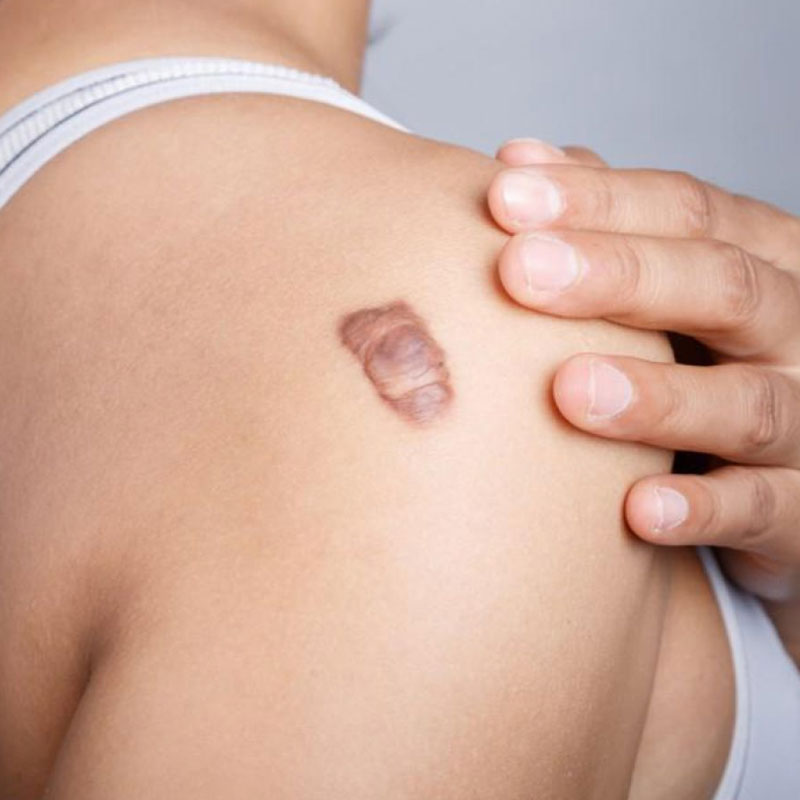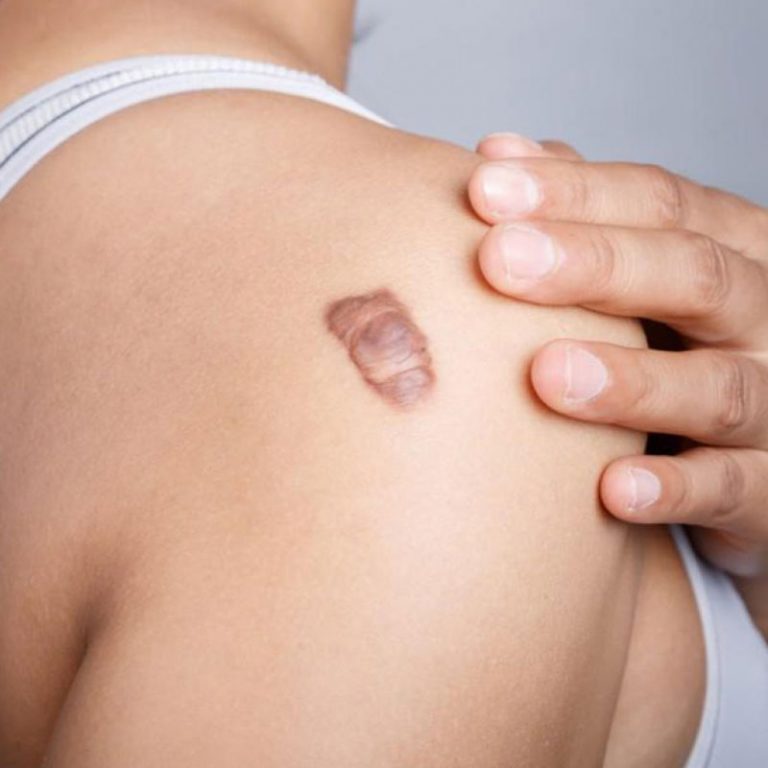WHAT ARE KELOIDS?
Keloid Scars Treatment – When your skin is injured, fibrous scar tissues quickly grow over it to ensure a speedy recovery of the injury. However, in certain cases, extra scar tissues are produced which then solidify to form smooth, hard growths called Keloids.
Even though they can occur all over the body, it is most commonly found on the chest, shoulders, earlobes, and cheeks. They tend to grow quite big, and sometimes bigger than the actual wound itself, taking anywhere from a few weeks to a few months to completely form.
SYMPTOMS OF A KELOID SCARS
General symptoms of a keloid are as follows:
- A localised region that is flesh-coloured, red or pink
- Lumpy or ridged skin that is usually raised
- An area that continues to grow with the scar tissue
- An itchy patch of skin
Although it has a tendency to itch, they’re not harmful to the body and its functioning. The only sort of discomfort or irritation you may feel would be due to friction from clothing, etc.
Keloids are more of a cosmetic concern than a health one. Only in rare cases does it grow exponentially to the point where it restricts movement.
CAUSES OF A KELOID SCARS
Most types of skin injuries can lead to the formation of a keloid, including:
- Acne scars
- Burns
- Chickenpox scars
- Ear piercings
- Scratches
- Surgical incisions
- Vaccination sites
There are various factors that could determine the probability of you developing a keloid, including:
- Your skin tone: Darker skin tones tend to be more prone to keloid formations
- Your ancestry: People with Asian or Latino descent tend to have more keloids
- Your age: Those younger than 30 years of age can develop keloids more frequently
- Being pregnant
- Your genetics: Keloids have a genetic component to their existence. Hence if one or both of your parents have a history of keloids, you are most likely to get them too.
KELOID SCARS TREATMENT
There are various methods you can adopt to treat your keloids.
- Home remedies:
Before considering surgical methods, you could always try home remedies to reduce the keloid to a certain extent. You may opt to use moisturising oils to help soften the tissues in the keloid. This could also help reduce the keloid size to an extent as well, as they tend to shrink over time anyways.
If you are to consult a doctor, you may be given a few options that are less invasive in nature, before surgery or laser treatment. Some of these include silicone pads, pressure dressings, or even injections. However, these treatments need a frequent and careful application, and results may only show after a few months.
2. Surgery:
In case of larger, more stubborn keloids, surgery is a recommended option. Cryosurgery or Cryotherapy is a commonly used method for this very purpose. This procedure makes use of liquid nitrogen to ‘freeze away’ the keloid.
Once this technique is administered, you may be asked to get corticosteroid injections to reduce inflammation and the chances of a regrowth.
3. Laser treatment:
Laser treatment is another procedure used to treat keloids. By using high beams of laser, the keloid and its surrounding skin are smoothened out for a more toned and seamless appearance.
However, the only drawback with this technique is the possibility of the keloid worsening, as the lasers may increase scarring and redness in the region. Even though this is definitely better than the original scar itself, it goes without saying that this treatment could leave behind some form of minor scarring.
PREVENTING KELOIDS
Treatments for keloids are not always successful completely. Hence it is imperative that everyone practices simple preventive measures that can greatly decrease the chances of a potential keloid formation.
By using pressure pads or silicone gel pads after an injury, the chances of a keloid formation can reduce a lot. One should also note that sun tanning or exposure can cause the keloid region to grow darker than the surrounding skin, hence making it important to protect injuries from harsh sun exposure.
Keeping your skin injuries clean and covered is the easiest way to make sure keloid formation doesn’t happen. But as always, this is not a sure-shot fix to the solution, as it only reduces the possibility of growing a keloid.
For a Keloid Scars Treatment consult with Dr. Ang, call +65 6353 3851.


